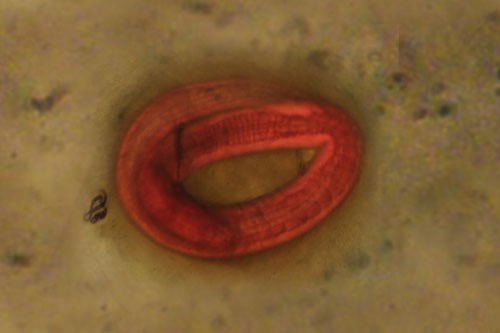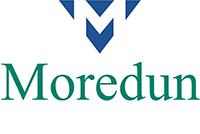
Diagnostic test for encysted small redworm
19 August 2017
In Developmenet
The following news story has been reproduced with the kind permission of author Professor Jacqueline B Matthews, BVMS PhD MRCVS, and the Moredun Research Institute, Edinburgh where this exciting work is taking place.
The best news for horse owners is that work is now underway to validate the test, with the anticipation that it will be commercially available in the next 1-2 years.
Update on the development of a diagnostic blood test for the encysted larvae stage of the horse roundworm cyathostomin

Cyathostomins (or small strongyles or small redworm) are ubiquitous parasitic roundworms that live in the large intestine of horses and other equids. Larvae are ingested by horses from pasture after which these worms can spend a substantial part of their life-cycle as encysted stages in the gut wall. Larvae can exist in this state for many months. In some individuals at certain times of the year, encysted larvae can comprise up to 90% of the total worm burden, with up to several million worms having being reported in some horses. The larvae can emerge in large numbers to cause life-threatening bowel inflammation, known as colitis (larval cyathostominosis).
Management problems of small redworm in the horse
Direct methods for the detection of encysted larvae do not exist, so infection with these worms is hidden. Faecal worm egg count tests will not detect encysted larvae because they are immature and do not produce eggs that can be detectable in dung. Because of the pathogenic capacity of the larvae, the administration of specific anthelmintics (moxidectin or a five-day course of fenbendazole) that have licensed activity against these stages is regarded as an essential component of control programmes. Currently, a ‘blanket’ larvicidal treatment is recommended in late autumn/winter to target these stages because there are no tests available that can inform on their presence or level of burden.
Due to high levels of resistance to fenbendazole, moxidectin is the only compound likely to be effective against encysted larvae, so efficacy of this compound needs to be preserved. To do this, a reduction in treatment frequency is recommended. This can be achieved by improving grazing practices to reduce worm transmission via the environment, combined with the specific targeting of anthelmintic treatments based on strongyle egg shedding.
However, this does not address the presence or burden of encysted larvae within individuals. Indeed, horses with sizeable encysted larval burdens often have no or low egg shedding. Because of these issues, a test that informs on the presence or burden of encysted larvae would facilitate anthelmintic targeting as well as assist in the diagnosis of larval cyathostominosis, a challenge in practice due to the non-specific nature of the associated clinical signs.
Steps to develop a reliable diagnostic test for small redworm
At Moredun we have previously identified two worm protein complexes that showed promise as diagnostic markers for encysted larval infection. These protein preparations are labour-intensive to prepare and rely on a source of equine tissue. Therefore, we developed a research plan to identify the genes that encode protein components of the complexes to develop a recombinant protein-based test. So far, two proteins have been identified that have diagnostic value.
As horses invariably harbour a range of cyathostomin species, a diagnostic test will need to take this into account. For this reason, we are analysing antibody responses to proteins derived from 14 common cyathsotomin species and are testing combinations of these to investigate which give the best predictive information on the presence and/or burden of larvae. We are also starting to work with diagnostic labs in the UK to validate the test, with the anticipation that it will be commercially available in the next 1-2 years.
Moredun are grateful to the Horserace Betting Levy Board and The Horse Trust for supporting the development of this test. For further information about this work please contact Jacqui Matthews ([email protected]) or Rhona MacDonald ([email protected]).
